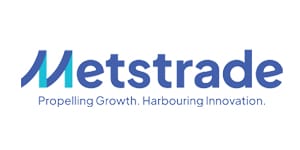SubSea Craft on course with Victa development

SubSea Craft has shared images of the latest development of Victa, its technically advanced surface-submersible, designed for the defence market. This DDU’s (diver delivery unit) principal function is the delivery and recovery of divers for missions including reconnaissance, surveillance and security.
Capable of operating both on and under the water, Victa is said to combine the characteristics of a fast surface craft with those of a specialist submersible to deliver divers on or beneath the surface – discreetly.
The rapid transition between the two is enabled by a fly-by-wire control system, which delivers dynamic stability in all conditions. The craft is made of carbon fibre with a Diab core.
“Now that the dynamic shape and form of Victa has been established, we can get to the truly exciting stages of the build,” says Scott Verney, CEO. “Integration of the full technical suite and control systems for the craft will be a game-changing moment. All together we have around 250 subsea connectors all controlled by the fly-by-wire on-board system – it’s the most advanced craft of its type.
“In an uncertain world, nations seek an advantage which Victa can provide. It includes a number of technological firsts. Victa’s engine, for example, has been fully sub-marinised in order to allow it to withstand complete immersion in salt water. We are talking about outstanding product delivery here for our clients.
“We are on track for trials and testing this coming winter, with the aim of having the craft operational late 2021.”
A sub-marinised SeaTek 725hp diesel engine powers Victa on the surface through a highly efficient water jet, achieving speeds of up to 40 knots over a range of 250nm. Two SubCtech lithium Ion battery packs kick in upon diving, providing the power to enable sub-surface operation. The batteries can power the submersible for up to four hours – sufficient to cover 25nm with two crew and six operators.
The design also features forward and rear hydroplanes – a vital part of the control system in maintaining stability when submerged – along with vertical thrusters.
Funded by a private investor to the tune of £12m, the company is seeking second-stage investment.















